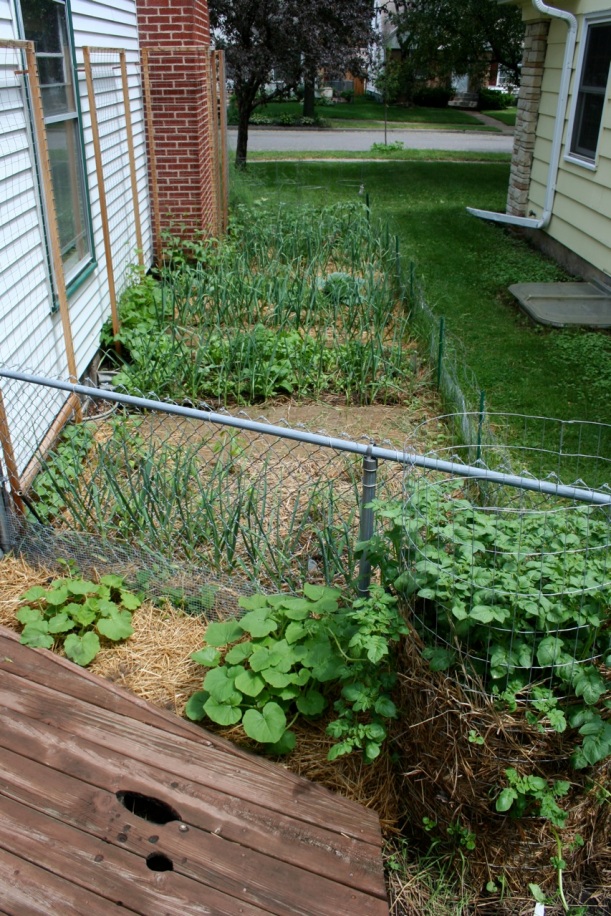Yes, there is an event called Milkapalooza, and yes of course we went to it this weekend. It was a blast. Anneke, it turns out, is a natural at milking cows:

The event featured tours of the Minars’ farm, and I eagerly soaked up every minute. This was our opportunity to see where our milk comes from! And considering how much yogurt, butter, and ice cream we make with their milk/cream, a fair amount of our family’s daily calories come from this patch of grass and cows near New Prague, Minnesota. Here are some of the highlights from the tour:

Here’s the winter hoop house (not sure if that’s the right term) — it’s a simple structure where the cows go in cold weather. There is no barn for them to sleep in — this is it. The bedding at the bottom is turned frequently, and as it decomposes, it heats up (this is all part of the process, as those of you who compost know). The heat is plenty for the cows, even in Minnesota winters.

The milk parlor was a little dark, so sorry for the low quality. I’ve only seen a handful of milk parlors, including my Grandpa Rensenbrink’s very low-tech one, so this was very impressive. They can milk 32 cows at once! Looking at the picture, basically cows would be facing you. The person goes down a set of stairs into a galley where they have easy access to all the udders to hook up the machines. It was pretty neat and efficient, and very clean.

The family raises pigs and chickens too, but not for commerce necessarily (that I know of anyway). Those were some darn happy pigs. Anneke naturally thought they were completely adorable and said that one in particular looked exactly like Wilbur from Charlotte’s Web.

Finally, the cows themselves. My, what beautiful girls. The milking herd is about 150 cows, which seemed like a small number to me (not really sure on that though). They have several different breeds including brown jerseys like this one. So, Cedar Summit Farms is different from conventional and even some organic dairies in several key ways:
1. The cows eat grass, and stored hay in winter. Quite a bit of acreage is required to grow that much “pasture salad,” as the tour guide called it. Apparently when they switched from grains to grass, milk production went down. But so did costs, so things balanced out in the long term.
2. Calves get to stay with their mother for 4-6 weeks after birth. Apparently you get much healthier calves this way.
3. The cows live a bit longer than they would if they lived on concrete, inside, their whole lives.
4. The cows still become hamburger, after 5-6 pregnancy and lactation cycles. Sorry, but it’s true.
I know very little about dairy farming. But I liked everything I saw and heard at the farm this weekend. There were so many things to think about — and I’ve already gone on and on about how much healthier grass-based dairy products are.
This is going to sound a bit melodramatic, but I looked at this farm and saw a way to save the rural America I grew up in and love. By making farming a bit less efficient, you instantly need many, many more farmers than we currently have. Farms get smaller again. Families can be supported by a smallish farm. Rural communities have an economy again. Everyone wins. You can set aside the health, environmental, and animal welfare implications of “agribusiness” as we know it, and the bare economic facts point to smaller, greener farms being much better for people and communities.
Now the challenge: how to talk people into making the switch to milk that costs twice as much. And, how to get the government to subsidize farm programs that actually benefit real farmers instead of corporations — because conventional dairy farming, like so much else in our society is partially a product of subsidies both to corn and oil. It’s not sustainable. Things have got to change.
[ Blushes, thanks you very kindly for reading this far, and steps off soap box ]










































